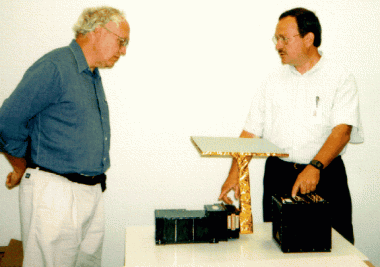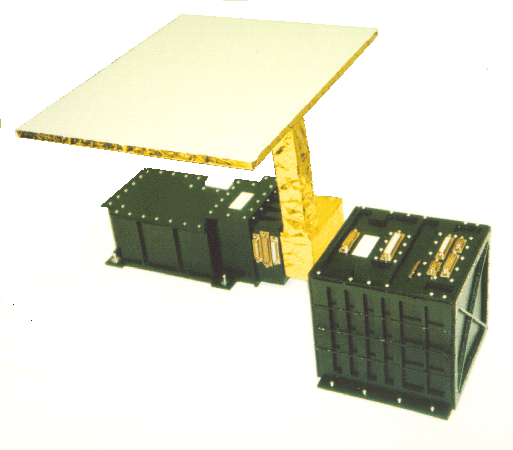



Each FES consists of camera with a sensitive charge-coupled device (CCD) detector. These cameras obtain visible-light images of a small patch of sky (about 19.5 x 19.5 arcminutes) surrounding a science target. This light is fed to the FES by the mirrored front surface of a focal-plane assembly (FPA), which also contains the entrance apertures for the far-ultraviolet spectrograph. The FES determines the positions of several field stars in the neighborhood of the target, and feeds this information to the satellite control system in order to keep FUSE centered on the target (to an accuracy of about 0.5 arcseconds) during science exposures. Only one FES is required for operations: the other serves as a redundant backup system.
The CCDs in the FES units have 1024 x 1024 pixels, each of which is 24 microns square. In order to be sufficiently sensitive, they are cooled to approximately -60 degrees C by means of a thermoelectric cooler unit. The excess heat generated by these units is removed from the spectrograph cavity by conduction along a heat strap to a large, flat radiator (see above), which will be mounted on the side of the satellite. The satellite is positioned so that the active FES radiator is kept in the shade.

Photo Credits: Rejean Michaud (CSA Space Science Program Office)